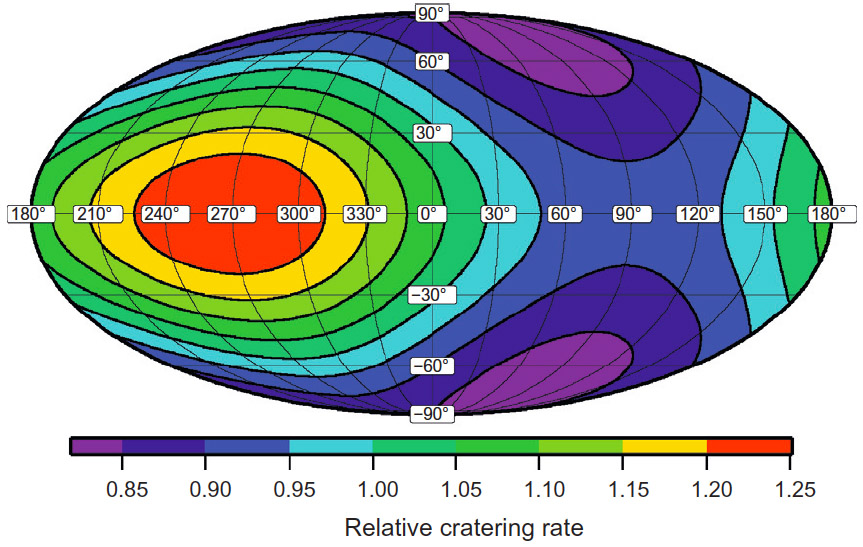May 14, 2021
Nudging Ages
Originally published September 25, 2011

image from Feuvre and Wieczorek (2011)
Calculating ages of surfaces across the Moon by crater counting generally assumes that projectiles are equally likely to hit any area. But Mathieu Le Feuvre and Mark Wieczorek of the Institut de Physique du Globe de Paris have found that that is not true. They conducted a detailed analysis of the orbits, velocities and sizes of projectiles, and the conversions of these quantities to crater diameters. The image above shows their results, that the likelihood of impact varies significantly and systematically across the lunar surface. The cratering rate is about 25% higher than the Moon-wide average along the equator at 90°W. And there is a zone where the rate is about 20% lower along the eastern limb centered at 65° North and South. The center of the visible face of the Moon has about the average cratering rate. What is special about the western limb? It is the apex of motion of the Moon around the Earth, where the velocity of impactors is 500 m/s higher than average, and consequently crater diameters are larger. The correction needed for some ages of about 2 b.y. may be a half billion. The image above reflects the spatial distribution of cratering over the last 3.5 b.y., but doesn't necessarily hold before then because the Moon was significantly closer to the Earth, and there were probably different populations of impactors than today.
Chuck Wood
Related Links
Mathieu Le Feuvre and Mark A. Wieczorek. Nonuniform cratering of the Moon and a revised crater chronology of the inner Solar System. Icarus 214 (2011) 1–20.
Yesterday's LPOD: A Sliver in the Sea
Tomorrow's LPOD: Rimless
COMMENTS?
Register, Log in, and join in the comments.



